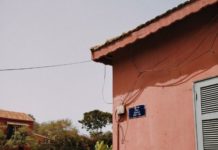(5 March 2019 – DLR) As a part of NASA’s InSight mission, the German Aerospace Middle (Deutsches Zentrum für Luft- und Raumfahrt; DLR) developed a penetrometer designed to dig three to 5 metres under the floor of Mars and measure the warmth emanating from the planet’s inside.
After the Mars ‘Mole’ started hammering into the bottom on Thursday 28 February, the probe, which is a part of DLR’s HPthree (Warmth and Bodily Properties Bundle) instrument, took place three-quarters of the best way out of its housing construction earlier than stopping. Knowledge additionally means that the ‘Mole’ is at a 15-degree tilt.

The housing of the HP3 experiment moved barely throughout hammering (courtesy: NASA/JPL-Caltech/DLR)
“The staff has subsequently determined to pause the hammering for about two weeks to permit the state of affairs to be analysed extra intently and collectively provide you with methods for overcoming the impediment,” writes Tilman Spohn of the DLR Institute of Planetary Analysis, Principal Investigator of the HPthree experiment, on his InSight mission weblog. The researchers suspect that the Mole has hit a rock or some gravel. The staff had hoped that there can be comparatively few rocks beneath the soil, as photographs of the touchdown website present only some on the floor close to the touchdown module. In precept, the Mars Mole has been designed to push smaller stones apart, and proved able to such a feat in assessments performed earlier than it was launched for Mars.
All the knowledge obtained present that the Mole is constant to work as anticipated: after heating up by 28 levels Celsius through the hammering course of, it measured how shortly warmth dissipated into the soil because it cooled down. This property, referred to as thermal conductivity, helps to find out the warmth circulate from deep contained in the planet. As soon as the Mole is deep sufficient, it will likely be attainable to calculate the warmth circulate with better accuracy.
The researchers will perform extra measurements this week to be able to gauge the thermal conductivity of the higher layer of the Martian soil (regolith) extra exactly. As well as, the radiometer on InSight’s deck can be used to analyse temperature modifications within the soil brought on as Phobos, considered one of Mars’ moons, strikes in entrance of the Solar. Phobos’ shadow will cross the radiometer’s subject of view 3 times this week, fairly like an eclipse of the Solar on Earth, and the instrument will measure the end result.
The InSight mission is being carried out by NASA’s Jet Propulsion Laboratory (JPL) in Pasadena, California, on behalf of the company’s Science Mission Directorate. InSight is a part of NASA’s Discovery Program. DLR is contributing the Warmth Move and Bodily Properties Bundle (HP³) experiment to the mission. The scientific management lies with the DLR Institute of Planetary Analysis, which was additionally answerable for creating and implementing the experiment in collaboration with the DLR Institutes of Area Techniques, Optical Sensor Techniques, Area Operations and Atronaut Coaching, Composite Buildings and Adaptive Techniques, and System Dynamics and Management, in addition to the Institute of Robotics and Mechatronics. Taking part industrial companions are Astronika and the CBK Area Analysis Centre, Magson GmbH and Sonaca SA, the Leibniz Institute of Photonic Expertise (IPHT) in addition to Astro- und Feinwerktechnik Adlershof GmbH. Scientific companions are the ÖAW Area Analysis Institute on the Austrian Academy of Sciences and the College of Kaiserslautern. The DLR Microgravity Person Assist Middle (MUSC) in Cologne is accountable for HP³ operations. As well as, the DLR Area Administration, with funding from the German Federal Ministry for Financial Affairs and Vitality, supported a contribution by the Max Planck Institute for Photo voltaic System Analysis to the French fundamental instrument SEIS (Seismic Experiment for Inside Construction).






























